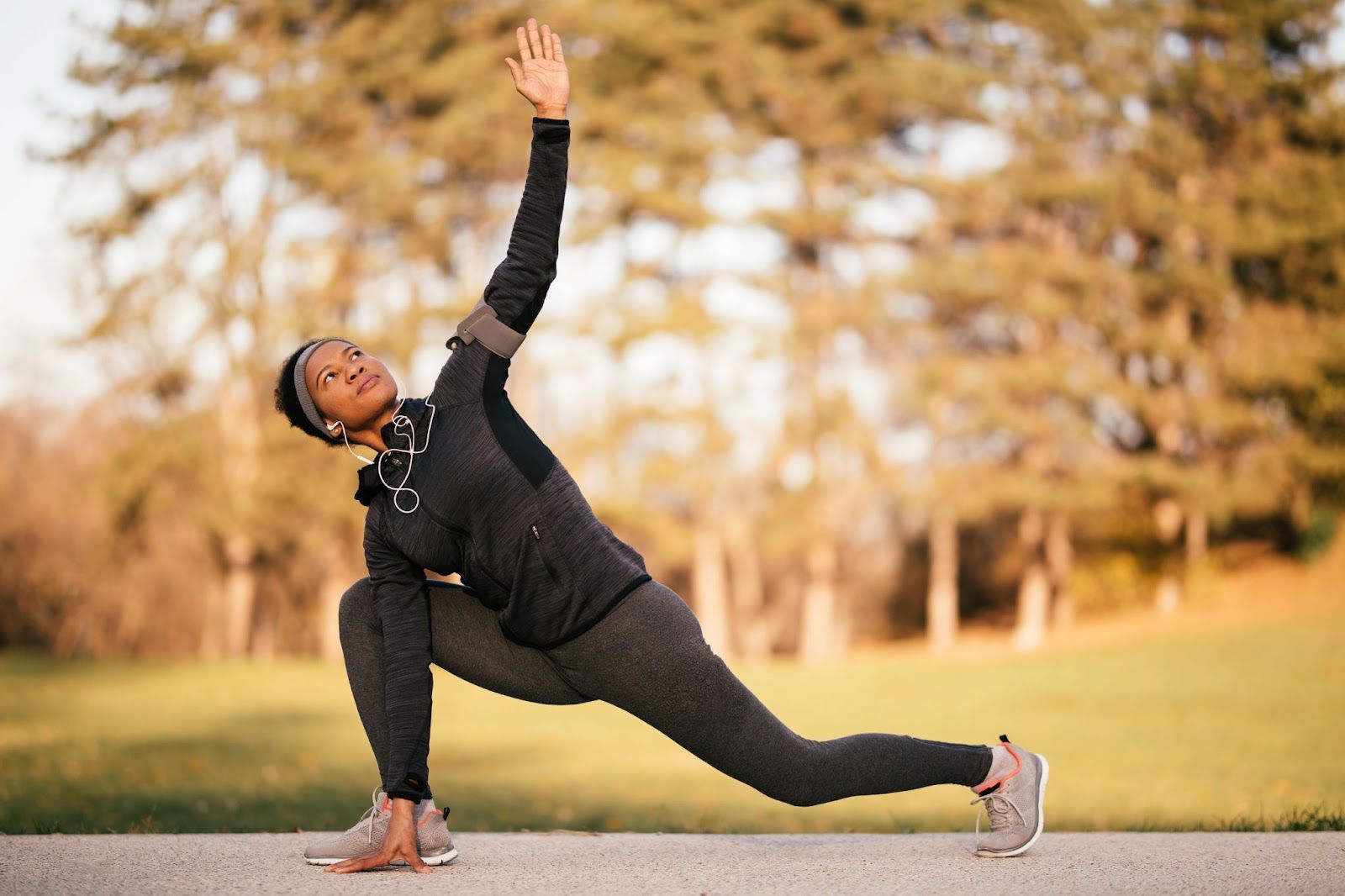Call us at (909) 674-0071
Stretching for Strength: How Flexibility Training Enhances Muscle Growth
In pursuing muscle growth, many people focus solely on lifting heavier weights or increasing their repetitions. There are great benefits indeed for muscle tone and flexibility, though. However, many people are guilty of overlooking aspects of fitness that can significantly enhance muscle growth. While it may seem counterintuitive initially, incorporating stretching and flexibility exercises into your workout routine can yield remarkable benefits for muscle development.
In this article, let's explore the science behind how flexibility training enhances muscle growth and explore practical ways to integrate it into your fitness regimen for optimal results.
How Flexibility Training Enhances Muscle Growth
Flexibility training is often overlooked in the context of muscle growth. In reality, it plays a significant role in enhancing overall muscle development.
Here's how flexibility training contributes to muscle growth:
Improved Range of Motion (ROM)
Flexibility training helps to increase the range of motion around joints. By regularly stretching and elongating muscles, tendons, and ligaments, individuals can move their joints through a greater range of motion during exercises. This increased range of motion enables more effective muscle contractions throughout a wider range of movement, resulting in increased muscle growth.
Reduced Risk of Injury
Including flexibility exercises in a workout routine reduces injury risk by enhancing joint mobility and muscle flexibility. When muscles are more flexible, they are less prone to strains and tears during exercise. This means individuals can train with higher intensity and volume, ultimately leading to greater muscle growth over time.
Improved Muscle Activation
Flexibility training can improve the activation of muscles during exercises. When muscles are tight or restricted due to limited flexibility, they may not fully engage during movements, leading to imbalances and underdevelopment. By stretching regularly, muscles become more pliable and responsive, leading to better muscle activation and recruitment during workouts, thus promoting muscle growth.
Enhanced Muscle Recovery
Flexibility exercises are beneficial in muscle recovery by increasing blood flow and decreasing muscle tension. Good circulation helps muscles get more oxygen and nutrients, which promotes faster recovery after intense workouts. Moreover, stretching can ease muscle soreness and stiffness, enabling people to resume training sooner and stay consistent with their workout routine, which is vital for muscle development.
Prevention of Muscle Imbalances
Flexibility training can help prevent muscle imbalances, which occur when certain muscles are tighter or weaker than others. Imbalances can lead to poor posture, movement dysfunction, and increased risk of injury. By making stretching a habit and targeting specific muscle groups, individuals can maintain optimal muscle balance throughout their body, ensuring more even muscle development and promoting overall muscle growth.
Allowing flexibility training to become a comprehensive workout routine alongside resistance training and cardiovascular exercise can significantly enhance muscle growth, improve performance, and reduce the risk of injury, ultimately leading to better overall fitness and health.
When Should Flexibility Training Be Used?
Flexibility training should be incorporated into a well-rounded fitness routine and can be beneficial at various times, depending on your goals and preferences.
Here are some scenarios when flexibility training can be beneficial:
Warm-Up
Performing flexibility exercises as part of your warm-up routine can help prepare your muscles and joints for more intense physical activity. Dynamic stretches, which involve controlled movements that gently take your joints through their full range of motion, are especially effective for warming up.
Post-workout
Cooling down with static stretches after a workout can help improve flexibility, reduce muscle soreness, and promote relaxation. Holding stretches for 15-30 seconds allows muscles to lengthen and relax, aiding in recovery.
Rehabilitation
Flexibility exercises are often prescribed as part of injury rehabilitation programs. They can help restore range of motion, improve joint function, and prevent stiffness during healing.
Stress Relief
Involving stretching exercises such as yoga or tai chi into your routine can promote relaxation, reduce stress, and improve overall well-being. These activities often include both physical postures and breathing techniques to enhance flexibility and calm the mind.
Active Recovery
On rest days or during periods of lighter training, engaging in gentle flexibility exercises can help maintain range of motion, prevent stiffness, and facilitate recovery without putting additional strain on the body.
Before Bed
Performing gentle stretching or relaxation exercises before bed can help relieve tension built up during the day, promote better sleep, and prepare your body for rest and recovery overnight.
As Part of a Comprehensive Fitness Program
Incorporating flexibility training with cardiovascular exercise, strength training, and balance exercises in your routine can improve fitness, reduce injury risk, and enhance performance in activities. When you decide to do your flexibility training, it depends on what you want to achieve, how fit you are, and what you like to do. So, you can plan it according to what suits you best. It's essential to listen to your body, start gradually, and seek guidance from a qualified fitness professional if you're unsure how to incorporate flexibility exercises into your routine effectively.
The Power of Flexibility Training for Peak Performance and Wellness
Flexibility training is an essential and adaptable aspect of a comprehensive fitness routine. It can provide numerous benefits to overall health and well-being. Whether used to enhance performance, aid in recovery, prevent injuries, or promote relaxation and stress relief, incorporating flexibility exercises into your routine can offer numerous benefits for both physical and mental well-being. Integrating flexibility training during warm-ups, cooldowns, rehabilitation, active recovery, or relaxation sessions can improve the range of motion, reduce muscle soreness, promote relaxation, and support fitness goals. Consistency, proper technique, and listening to your body are crucial to maximizing the benefits of flexibility training and maintaining long-term health and mobility.
It is also advisable to get the assistance of an expert.
Visit
StretchX blog to learn more about their personalized stretching services.
Certified Stretch Instructor
Phone: (909) 674-0071
Business Hours: Monday to Friday: 8am - 7pm • Saturday: 7am - 1pm
All Rights Reserved | StretchX





